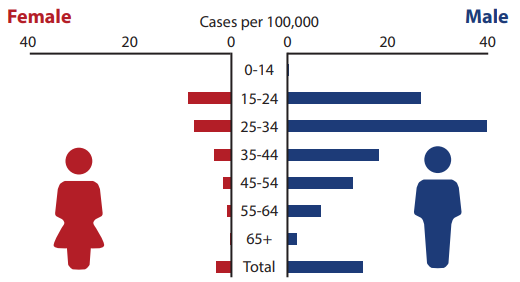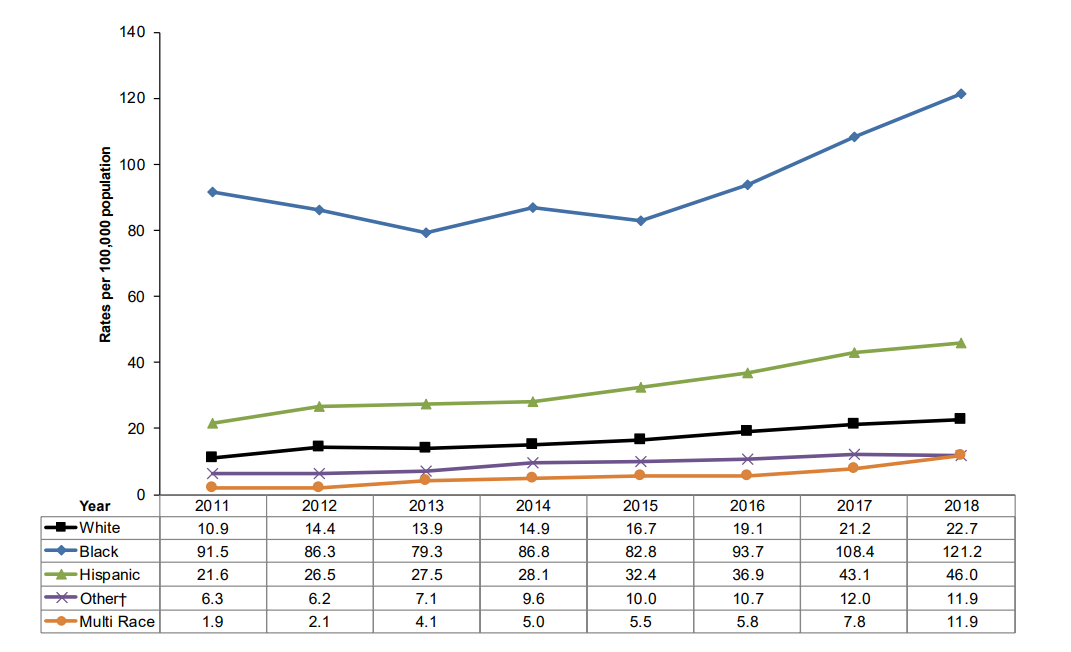Introduction
Syphilis is one of the most common and well-known diseases of the human reproductive system. In the absence of a proper amount of knowledge about its symptoms, causes, mode of transmission and complications, and proper and carefully planned treatment, serious negative consequences for the health of society can arise. Thus, this scientific research aims to study such an infectious disease as syphilis and to consider the determinants of health and the epidemiological triad associated with it. Moreover, the research paper will provide information about what role nurse practitioners play in the treatment of this disease.
This part of the work will provide the primary information and data that are important for understanding why syphilis is a threat to public health and well-being. Thus, syphilis is an infectious disease that is sexually transmitted. The research underlines that “it is caused by infection with the spirochetal bacterium Treponema pallidum subsp. pallidum” (Forrestel et al., 2020, p. 1). Another common way in which people can get infected is by getting bacteria on minor cuts on the skin and then into human blood. Homosexual and bisexual men who engage in sexual activity with other men and people with HIV-positive indicators are at risk.
Depending on the stage of development of the disease, it is divided into several stages, each of which has its own specific characteristics. Hence, at the initial stage, an individual may have a small sore on the genital organ; however, other symptoms may not occur for a long time. Other characteristics are the occurrence of rash, sores in the mouth or genital area, hair loss, muscle aches, a fever, and a sore throat. Among the main complications, in addition to aggravating symptoms due to lack of treatment, there are several that seriously affect human well-being. Hence, it can be “neuralgic (brain and nerve) problems, eye problems, and even blindness. Moreover, syphilis is linked to an increased risk of transmission of HIV infection” (“Syphilis & MSM,” 2022, para. 3). The primary method of treating syphilis is prescribed penicillin or alternative medications containing it, in cases of allergies.
Further, it is necessary to look at the demographic situation regarding the spread of sexually transmitted diseases in the state of Texas. Therefore, it is noted that according to statistics for 2018, among people who had syphilis, 83 percent were men aged 25-34 years. (Fig. 1) (Texas Department of State Health Services, 2020). In addition, studies show that regarding race, representatives of the black population suffer from syphilis more than other races (Fig. 2). This demographic situation provides an understanding of how best to build a plan to combat the disease and which groups of the population should pay attention to.


In addition to age, gender, and race, it is necessary to consider other indicators that can provide a complete picture of the severity of the disease. Hence, the rate of mortality of syphilis in Texas is a relatively low percentage since primary and secondary syphilis are more common and can be almost wholly cured with proper treatment. Regarding prevalence, the number of incidents is a rate of 8.8 per 100,000 (Texas Department of State Health Services, 2020). Thus, syphilis is a threat to public health and requires careful research.
Determinants of Health
The next aspect is the definition of determinants of health, which are associated with the spread of sexual infection. First of all, it is necessary to consider the social determinant of syphilis. Thus, the disease is more common among men who are in sexual contact with other men. Moreover, most of the cases relate to the young population aged 20-35, which is open to sexual experimentation (“Healthy People 2020 sexually transmitted diseases topic area overview,” 2020). Regarding race, the black population is characterized by a significantly higher level of prevalence than Caucasians.
The following determinants are environmental and physical influences on individuals. Henceforth, the first can be correlated with the precedence in the partner pool and places of partner requirement. Moreover, this may also include accessibility to services, especially medical and educational, accessibility to which is reflected in the level of morbidity. The physical effect is in the immune status, ectopy and co-infections. Therefore, such defined social, environmental, and physical determinants contribute to the development of the infection.
Epidemiological Triad
The epidemiological triad helps to identify the leading causes and connections that arise with the spread of the disease. The main components of this phenomenon are an external agent, a host, and an environment. Therefore, the disease spreads during the direct interaction of the agent and the host, which occurs in a particular environment. Research stated that “while syphilis infection is easily identifiable and treatable, rates of syphilis infection continue to increase among select populations in high-income countries and remain at endemic levels in low- and middle-income countries” (Kojima & Klausner, 2018). Thus, the study of the epidemiological trend of syphilis provides additional information about the health problem, which helps to find new methods to combat it.
The agent, in the case of syphilis, becomes the bacterium Treponema pallidum. Moreover, another agent factor may be the reduced immunity of the human body or its pathogenicity. Consequently, individuals who have contracted a sexual disease become the host. The main factors, in this case, are the type of contact with the agent, genetic composition, and nutritional and immunological status. The main environmental factor is the close sexual contact between the carrier of the disease and another person.
Role of the NP
Nurse practitioners are of particular importance in the prevention and treatment of the disease. AANP defines their role as a specialist who “assess patients, order and interpret diagnostic tests, make diagnoses and initiate and manage treatment plans — including prescribing medicines” (“All about NPS,” n.d., para. 1). Thus, they are an integral part of the process of developing treatment plans, education and awareness-raising among the population and ensure the most effective results of the provision of health services. To increase the quality of data collection and analysis and the development of evidence-based practice, it can include standards and synchronization with other systems to deliver the quality of care, patient safety, and optimal population health outcomes (Cupp, 2020). Equally important is the management of infectious diseases, among which surveillance, interventions, data collecting, and analysis stand out. All these measures contribute to the acquisition of the most valuable information about syphilis and help to track its dynamics and trends.
Conclusion
In conclusion, this research paper examined a disease such as syphilis, which poses a threat to public health. This is due to multiple factors, especially the fact that the symptoms may not last for a long time in an infected person. Thus, the paper also presents the causes and methods of the spread of the disease, the epidemiological triad, and the determinants of health that are associated with sexual disease. In the end, attention was paid to the role of nurse practitioners, who are an integral part of providing care, spreading awareness, and finding new ways of treatment.
References
All about NPs. (n.d.). AANP. Web.
Cupp, A.L. (2020). Population-based nursing: Concepts and competencies for advanced practice. (3rd ed.). Springer Publishing Company.
Forrestel, A. K., Kovarik, C. L., & Katz, K. A. (2020). Sexually acquired syphilis: Historical aspects, microbiology, epidemiology, and clinical manifestations.Journal of the American Academy of Dermatology, 82(1), 1-14. Web.
Healthy People 2020 sexually transmitted diseases topic area overview. (2020). CDC/NCHS. Web.
Kojima, N., & Klausner, J. D. (2018). An update on the global epidemiology of syphilis.Current Epidemiology Reports, 5(1), 24-38. Web.
Texas Department of State Health Services. (2020). Sexually transmitted diseases in Texas. DSHS.
Texas Department of State Health Services. (2020b). Texas STD surveillance report. DSHS. Web.